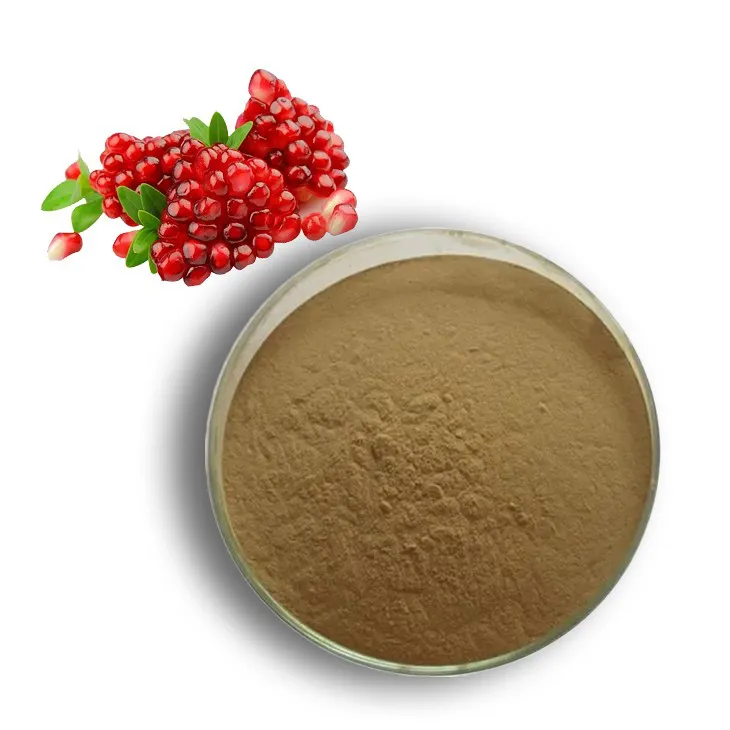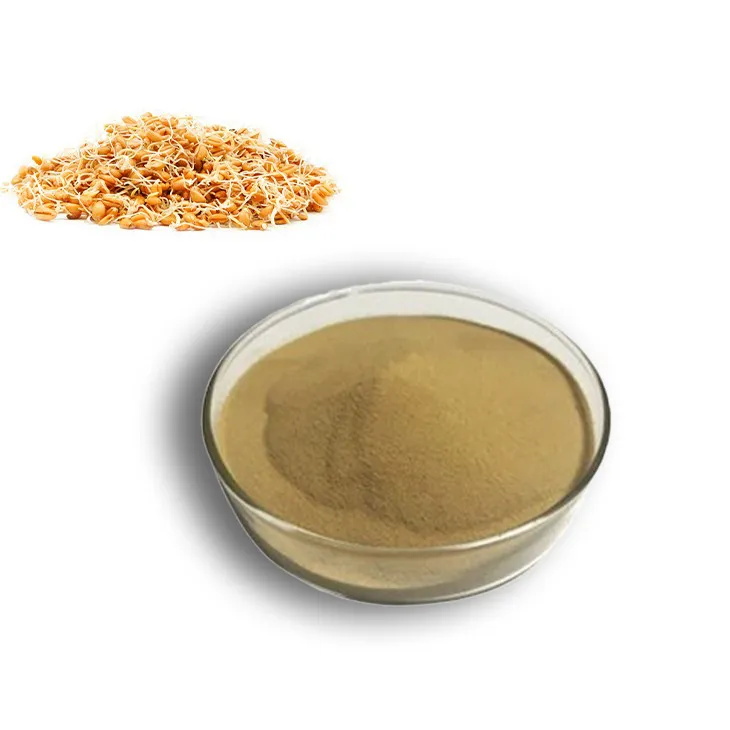- 0086-571-85302990
- sales@greenskybio.com
Four Main Methods for Extracting Black Garlic Extract from Plants.
2024-12-12

1. Introduction
Black Garlic Extract from plants has gained significant attention in recent years due to its potential health benefits and diverse applications in various fields. Extracting this valuable compound involves several methods, each with its own characteristics, impact on product quality, and role in different industries. This article will comprehensively explore four main extraction methods.

2. Solvent Extraction
2.1 Principle
Solvent extraction is one of the most common methods for obtaining Black Garlic Extract from plants. The principle behind this method is based on the solubility of the target compounds in a particular solvent. Different solvents can be used depending on the nature of the black garlic components to be extracted. For example, ethanol and water are often used as solvents. The plant material containing black garlic is soaked in the solvent, and the active compounds dissolve into the solvent over a period of time.
2.2 Procedure
- First, the plant material is carefully prepared. This may involve drying, grinding, or chopping the plants to increase the surface area for better extraction.
- Then, the appropriate solvent is added to the plant material in a suitable container. The ratio of solvent to plant material is an important factor that can affect the extraction efficiency.
- The mixture is then stirred or agitated for a specific period, usually several hours to days. This helps in the mass transfer of the black garlic components from the plant matrix to the solvent.
- After that, the mixture is filtered to separate the liquid extract (containing the Black Garlic Extract) from the solid plant residue.
- Finally, the solvent can be removed through evaporation or distillation techniques to obtain a more concentrated black garlic extract.
2.3 Impact on Product Quality
The choice of solvent can have a significant impact on the quality of the black garlic extract. Ethanol - based extracts may have different chemical profiles compared to water - based extracts. Ethanol can extract a wider range of hydrophobic compounds, while water is more effective for polar compounds. Improper solvent removal can also leave behind traces of the solvent, which may affect the safety and quality of the final product. Additionally, the extraction time and temperature during solvent extraction can influence the composition of the extract. Longer extraction times or higher temperatures may lead to the degradation of some heat - sensitive components in the black garlic.
2.4 Role in Different Fields
In the food industry, solvent - extracted black garlic extract can be used as a natural flavor enhancer or preservative. It can add a unique umami flavor to various food products. In the pharmaceutical and nutraceutical fields, it can be further processed to isolate specific bioactive compounds for use in dietary supplements or medications. The extract may also find applications in the cosmetic industry, where its antioxidant properties can be utilized in anti - aging products.

3. Supercritical Fluid Extraction (SFE)
3.1 Principle
Supercritical fluid extraction utilizes the properties of a supercritical fluid, typically carbon dioxide (CO₂), as the extraction medium. A supercritical fluid has properties between those of a gas and a liquid. It has a high diffusivity like a gas, allowing it to penetrate the plant matrix easily, and a density similar to that of a liquid, enabling it to dissolve a wide range of compounds. CO₂ is a popular choice because it is non - toxic, non - flammable, and can be easily removed from the extract at the end of the process.
3.2 Procedure
- The plant material is placed in an extraction vessel. The supercritical CO₂ is then pumped into the vessel at a specific pressure and temperature above its critical point (for CO₂, the critical pressure is about 73.8 bar and the critical temperature is about 31.1°C).
- The supercritical CO₂ interacts with the black garlic components in the plant material, dissolving them.
- The mixture of supercritical CO₂ and dissolved compounds is then transferred to a separation vessel, where the pressure and/or temperature is adjusted to cause the CO₂ to return to its gaseous state, leaving behind the black garlic extract.
3.3 Impact on Product Quality
Supercritical fluid extraction is considered a "clean" extraction method as it does not leave behind any toxic residues. Since the extraction process occurs at relatively low temperatures, it helps to preserve the heat - sensitive components in the black garlic. This results in an extract with a higher quality in terms of maintaining the integrity of the bioactive compounds. However, the equipment for SFE is relatively expensive, and the process requires precise control of pressure and temperature, which can be a challenge. If not properly controlled, it can lead to incomplete extraction or the degradation of some components.
3.4 Role in Different Fields
In the food and beverage industry, SFE - extracted black garlic extract is highly valued for its pure and natural characteristics. It can be used in high - end products where the quality and purity of the extract are crucial, such as in premium health drinks or gourmet food products. In the pharmaceutical industry, it can be used to produce high - quality extracts for drug development, especially for drugs that require a high - purity source of bioactive compounds from black garlic.

4. Microwave - Assisted Extraction (MAE)
4.1 Principle
Microwave - assisted extraction uses microwave energy to heat the plant material and the extraction solvent. The microwaves cause the polar molecules in the solvent and the plant cells to vibrate rapidly, which in turn generates heat. This internal heating effect can disrupt the cell walls of the plant more effectively than traditional heating methods, allowing the black garlic components to be released more easily into the solvent.
4.2 Procedure
- The plant material is mixed with the extraction solvent in a microwave - compatible container.
- The mixture is then placed in a microwave oven and irradiated with microwaves at a specific power level and for a certain time period. The power and time settings need to be optimized based on the type of plant material and the solvent used.
- After microwave irradiation, the mixture is cooled and then filtered to obtain the black garlic extract.
4.3 Impact on Product Quality
MAE can significantly reduce the extraction time compared to traditional solvent extraction methods. This short extraction time helps to minimize the degradation of heat - sensitive components in the black garlic. However, the use of microwaves can also cause some local overheating if not properly controlled, which may lead to the destruction of certain bioactive compounds. The choice of solvent is also important in MAE, as it can interact with the microwave energy differently and affect the extraction efficiency and product quality.
4.4 Role in Different Fields
In the field of herbal medicine, MAE - extracted black garlic extract can be quickly obtained for research purposes or for the production of herbal remedies. The reduced extraction time allows for more efficient processing of plant materials. In the food industry, it can be used to produce black garlic extracts for use in ready - to - eat products or in products where a quick production process is desired.
5. Ultrasonic - Assisted Extraction (UAE)
5.1 Principle
Ultrasonic - assisted extraction utilizes ultrasonic waves to enhance the extraction process. The ultrasonic waves create cavitation bubbles in the extraction solvent. When these bubbles collapse, they generate intense local shockwaves and micro - jets. These physical phenomena can disrupt the plant cell walls, facilitating the release of black garlic components into the solvent.
5.2 Procedure
- The plant material is immersed in the extraction solvent in an ultrasonic bath or an ultrasonic probe system.
- Ultrasonic waves are then applied to the mixture at a specific frequency and intensity for a certain period of time. The frequency, intensity, and time need to be optimized according to the characteristics of the plant material and the extraction requirements.
- After the ultrasonic treatment, the mixture is filtered to obtain the black garlic extract.
5.3 Impact on Product Quality
UAE can improve the extraction efficiency without causing significant degradation of the bioactive compounds in the black garlic. The gentle yet effective disruption of cell walls by ultrasonic waves helps to preserve the quality of the extract. However, like other extraction methods, the quality of the final product can also be affected by factors such as the choice of solvent, extraction time, and ultrasonic parameters. If the ultrasonic intensity is too high, it may cause some physical damage to the extracted compounds.
5.4 Role in Different Fields
In the natural product research field, UAE - extracted black garlic extract can be used for detailed chemical analysis. The relatively mild extraction conditions can help to obtain a more representative extract of the black garlic components. In the cosmetics and skincare industry, the extract can be used in products due to its antioxidant and skin - nourishing properties, and the extraction method is suitable for large - scale production.
6. Conclusion
Each of the four extraction methods - solvent extraction, supercritical fluid extraction, microwave - assisted extraction, and ultrasonic - assisted extraction - has its own advantages and limitations in terms of extraction efficiency, impact on product quality, and application in different fields. The choice of extraction method depends on various factors such as the desired quality of the black garlic extract, the scale of production, cost - effectiveness, and the specific requirements of the end - use applications. Understanding these methods is crucial for the optimal utilization of plant - sourced black garlic extract in different industries.
FAQ:
What are the four main methods for extracting black garlic extract from plants?
The four main methods could be solvent extraction, steam distillation, supercritical fluid extraction, and enzymatic extraction. Solvent extraction involves using a suitable solvent to dissolve the active compounds in the plant. Steam distillation uses steam to vaporize the volatile components which are then condensed. Supercritical fluid extraction utilizes supercritical fluids like carbon dioxide to extract the desired substances. Enzymatic extraction uses specific enzymes to break down the plant cell walls to release the extract.
How does solvent extraction affect the quality of black garlic extract?
Solvent extraction can have both positive and negative impacts on product quality. On the positive side, it can effectively extract a wide range of compounds. However, if the solvent is not completely removed, it may leave residues in the extract, which could be harmful and also affect the taste and odor of the final product. The choice of solvent also matters as some solvents may not be suitable for certain types of compounds, leading to incomplete extraction or degradation of some active ingredients.
What is the role of steam distillation in different fields regarding black garlic extract?
In the food industry, steam distillation can be used to obtain the volatile and aromatic components of black garlic extract, which are important for flavoring. In the pharmaceutical field, it can be used to isolate certain bioactive compounds with volatile properties. In the cosmetic industry, the distilled components may be used for their pleasant scents and potential skin - beneficial properties. However, it may not be suitable for extracting non - volatile and heat - sensitive compounds.
How does supercritical fluid extraction compare to other methods in terms of product quality?
Supercritical fluid extraction, especially with carbon dioxide, has several advantages in terms of product quality. It is a relatively clean method as carbon dioxide is easily removed, leaving no harmful residues. It can also be more selective in extracting specific compounds compared to solvent extraction. It can operate at lower temperatures compared to steam distillation, which is beneficial for heat - sensitive compounds. However, the equipment for supercritical fluid extraction is more expensive, which may limit its widespread use.
What are the advantages of enzymatic extraction for black garlic extract?
Enzymatic extraction can be a gentle method that preserves the integrity of bioactive compounds. It can specifically target the cell walls of plants, releasing the desired extract without causing significant damage to the active ingredients. It can also be carried out under milder conditions compared to some other methods, such as lower temperatures and less harsh chemical environments. This can result in a higher - quality extract with better functionality and bioactivity.
Related literature
- Advances in Black Garlic Extract Extraction Techniques"
- "Black Garlic Extract: From Plant to Product - An Overview of Extraction Methods"
- "The Impact of Extraction Methods on the Quality of Black Garlic Extract"
- ▶ Hesperidin
- ▶ citrus bioflavonoids
- ▶ plant extract
- ▶ lycopene
- ▶ Diosmin
- ▶ Grape seed extract
- ▶ Sea buckthorn Juice Powder
- ▶ Beetroot powder
- ▶ Hops Extract
- ▶ Artichoke Extract
- ▶ Reishi mushroom extract
- ▶ Astaxanthin
- ▶ Green Tea Extract
- ▶ Curcumin Extract
- ▶ Horse Chestnut Extract
- ▶ Other Problems
- ▶ Boswellia Serrata Extract
- ▶ Resveratrol Extract
- ▶ Marigold Extract
- ▶ Grape Leaf Extract
- ▶ blog3
- ▶ blog4
- ▶ blog5
-
Shikonin
2024-12-12
-
Sea buckthorn Juice Powder
2024-12-12
-
Pomegranate Extract
2024-12-12
-
Tinospora cordifolia extract
2024-12-12
-
Green Tea Extract
2024-12-12
-
Gynostemma pentaphyllum extract
2024-12-12
-
Peppermint Oil
2024-12-12
-
Sophora Flavescens Root Extract
2024-12-12
-
Wheat Germ Extract
2024-12-12
-
Hedyotis Diffusa Extract
2024-12-12





















